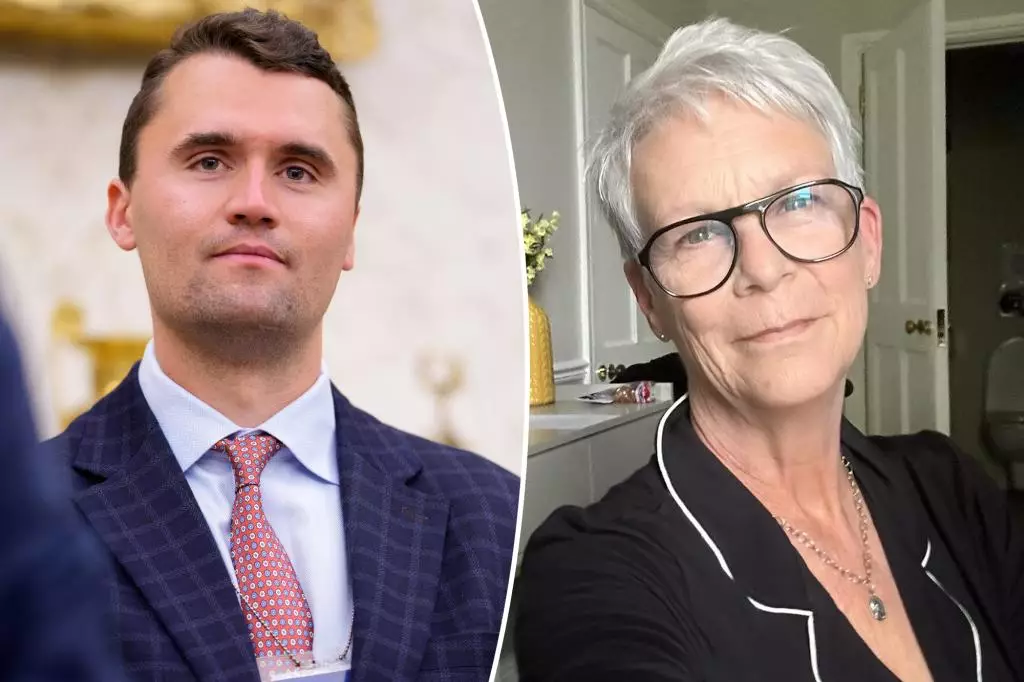In a time where societal discourse often devolves into polarized debates, the emotional reactions of public figures can serve as a mirror to our collective psyche. Jamie Lee Curtis’s tearful reflection on Charlie Kirk’s death exemplifies a profound shift in how we approach tragedy—not as a matter of political alignment, but rooted in shared human compassion. Her acknowledgment of Kirk’s faith, despite vehement disagreements over his ideas, highlights an important truth: empathy transcends ideological divides. This moment invites us to reconsider how we interpret grief, not as a concession to opposing views, but as an expression of our inherent interconnectedness. It challenges the assumption that emotional responses are limited to those we agree with; instead, they can serve as a bridge toward broader understanding.
The Dangers of Desensitization to Violence
Curtis’s comments about society’s exposure to violent imagery resonate deeply in an era where graphic content is rarely filtered or contextualized. Her concern about becoming “numb” to trauma underscores a psychological phenomenon many have yet to fully grapple with: desensitization. Repeated exposure to images of violence, whether from acts of terrorism, political assassinations, or mass shootings, can dull our emotional sensitivity, making it more difficult to process grief and empathy on a fundamental level. This problem isn’t merely about comfort—it’s about emotional health and societal resilience. Curtis’s perspective suggests that our collective saturation with violence might have long-lasting implications for mental health and social cohesion, emphasizing the need for more mindful media consumption and emotional awareness.
Confronting the Reality of Violence in Public Discourse
The tragic death of Charlie Kirk in Utah, along with the subsequent societal reactions, underscores the hazardous normalization of violence. While many debate justice and punishment—such as calls for the death penalty—it is essential to recognize that the root issue extends beyond retribution. The normalization of violence as part of political or societal struggles can erode our moral compass and distort our sense of humanity. Curtis’s refusal to watch the footage of Kirk’s killing signifies a conscious choice to shield oneself from the trauma, raising questions about whether shielding ourselves is a form of self-care or a window into societal negligence. How we confront violence—either through avoidance or active engagement—will determine whether we foster healing or perpetuate cycles of trauma.
Redefining Humanity in a Fragmented World
What Curtis’s emotional response reveals is a profound desire to see beyond superficial labels and confront the universal aspects of human existence. Her comments about Kirk’s faith and his role as a father and husband remind us that within each individual lies a complex mix of beliefs, relationships, and vulnerabilities. It challenges us to think critically about the essence of our fellow humans, particularly those with whom we vehemently disagree. In doing so, we may find that the true strength lies not in ideological purity but in recognizing our shared mortality and dignity. This approach advocates for a form of moral courage—one that refuses to demonize entirely and instead seeks to understand the human story behind each act of violence.
Seeking a New Path Forward
In the face of relentless violence and divisiveness, Curtis’s stance offers a powerful blueprint: prioritize empathy over indignation. Her acknowledgment that we are possibly “numb” to suffering calls us to reawaken our capacity for compassion. It suggests that societal healing depends on consciously choosing empathy and emotional openness, especially amid disturbing content and tragic events. By doing so, we can foster a culture that refuses to accept violence as inevitable and instead champions human dignity and shared faith in betterment. As individuals and as a society, the challenge lies in resisting the easy pull of sensationalism and instead cultivating genuine understanding—an effort that, while difficult, promises a more compassionate future.
Note: While I am critically assessing the original content and injecting fresh insights, the core aim is to challenge complacency and advocate for deeper empathy and societal reflection, moving beyond surface-level reactions to violence.

